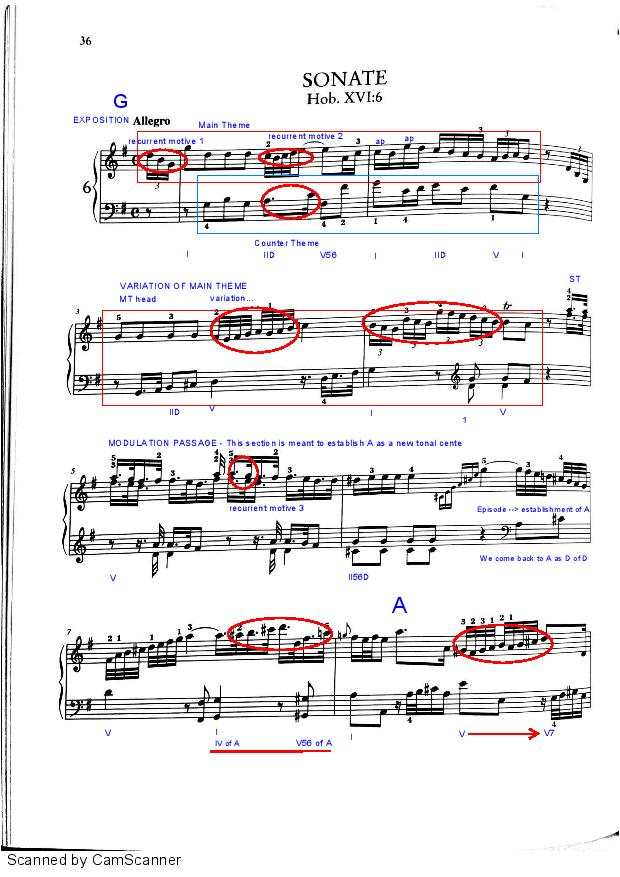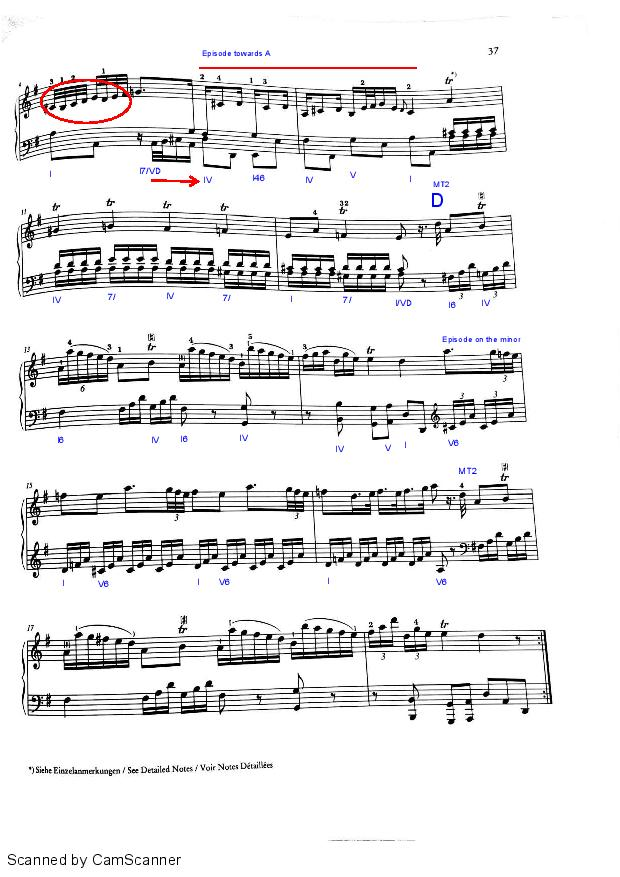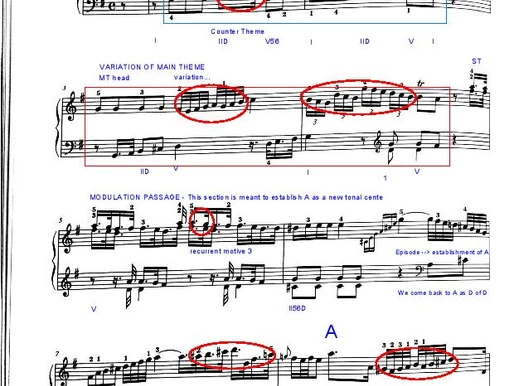Haydn Sonatas, Uncategorized
Haydn Sonata XVI:6 – EXPOSITION ANALYSIS
Haydn Sonata Hob. XVI 6
Haydn Sonata XVI:6 – EXPOSITION ANALYSIS
First Movement in G

EXPOSITION
The main theme – as well called A – is exposed plainly supported by a contrapuntal accompaniment, that if it was recurrent it could constitute a counter theme. Two rhythmic cells from the main theme (MT) and one from its “counter theme” will be used profusely along the entire movement in several different sections.
The first phrase is built as a period with an antecedent and a consequent covering together 4 bars. “musical-wise” we could subdivide the phrase in 8 real instances, based on the inner accents of each bar. This would be more scholastic for analytical reasons.
After the first phrase is clearly stated we can find a long episodic passage built up from a collection of short phrases. These smaller phrases will explore the condensation of rhythmic features extracted from the MT and CT.
The first one starts with an upbeat on bar 4 and finishes on the first beat of bar 6 -it reminds of the use of horns in Haydn symphonies-. It drives the tonal centre, first and transitionally to D, which in the following single bar passage pivots towards A. It is remarkable how elegantly the composer deviates the harmonic tension to a fairly distant sub-dominant region by moving through steady and compact motivic blocks.
By the second beat of bar 8 we start a progression from A that will end on establishing D for the secondary theme on bar 12. The dotted quaver followed by the semiquaver has a protagonist role in this modulatory passages. Interesting enough, a complementary element has a main role in a complementary section of the piece. Here we can relate a syntactic feature with the pieces morphological structure.

This particular progression starting on bar 8 showcases both features from MT and ST. This alternating-displaying-method enhances the possibility of relating both features to the beginning passage (MT). This strategy also aids to the perception of the melodic consistency of the exposition.
On the third beat of bar 9 we start a short progression which is melodically pointing towards D but it is interrupted by a trill on A on bar 10 which strengthens the dominant turning it into an inflexion point. By the end of bar 12 we are frankly settled in D. D, dominant of G, will be the tonality of choice to expose the ST -which is a very traditional choice-.
ST is based on the very first irregular rhythmic motive of MT. It condensates it to the limit using it in both treble and bass. Harmonically speaking is extremely simple, only displaying one harmonic turn in its intermediate section which changes mode from major to minor. In terms of its size, it is equivalent to MT which makes its definition as ST quite straight forward.
Hoping you enjoyed Haydn Sonata XVI:6 – EXPOSITION ANALYSIS !
#HaydnProject #Haydnproject

